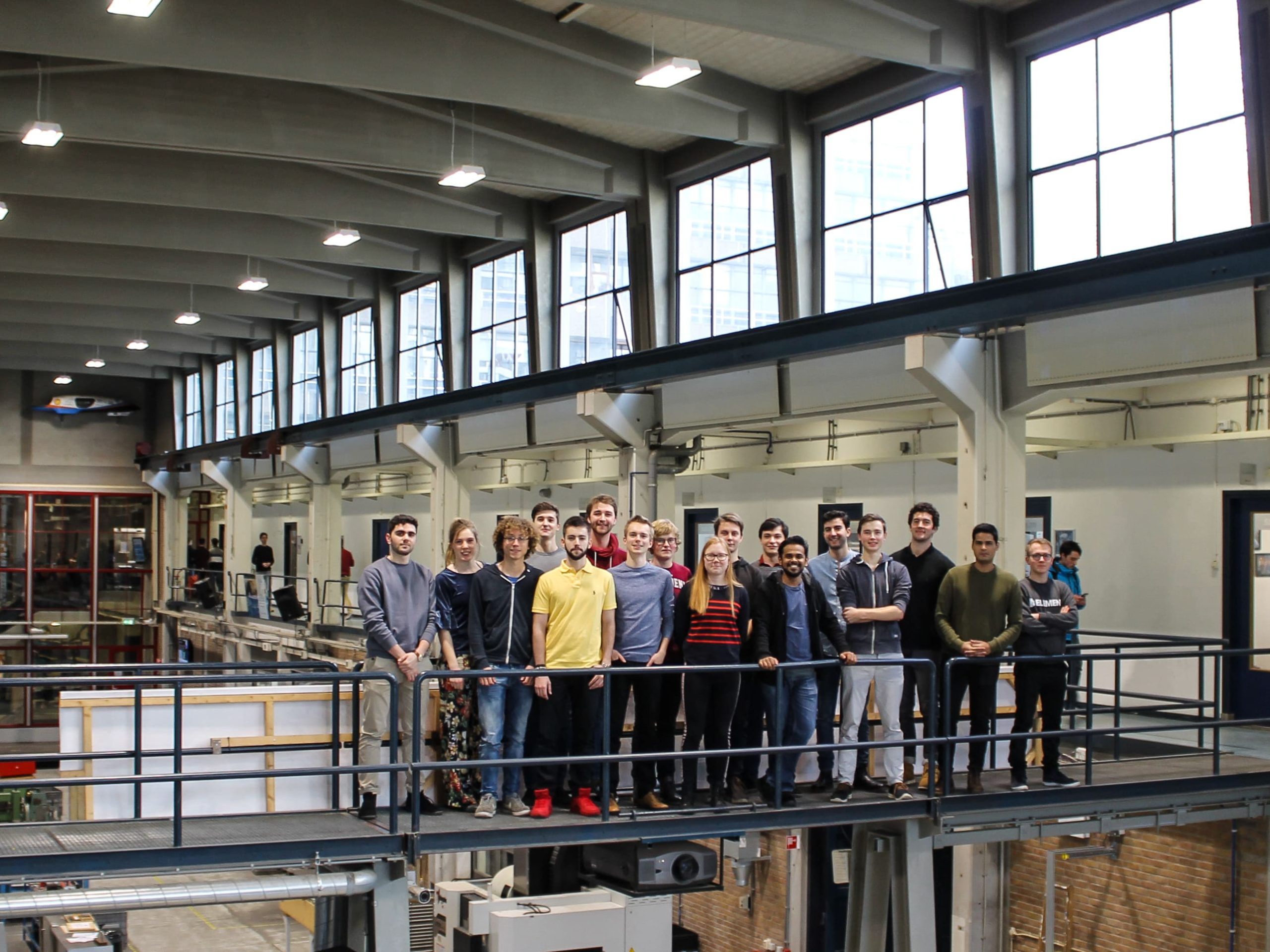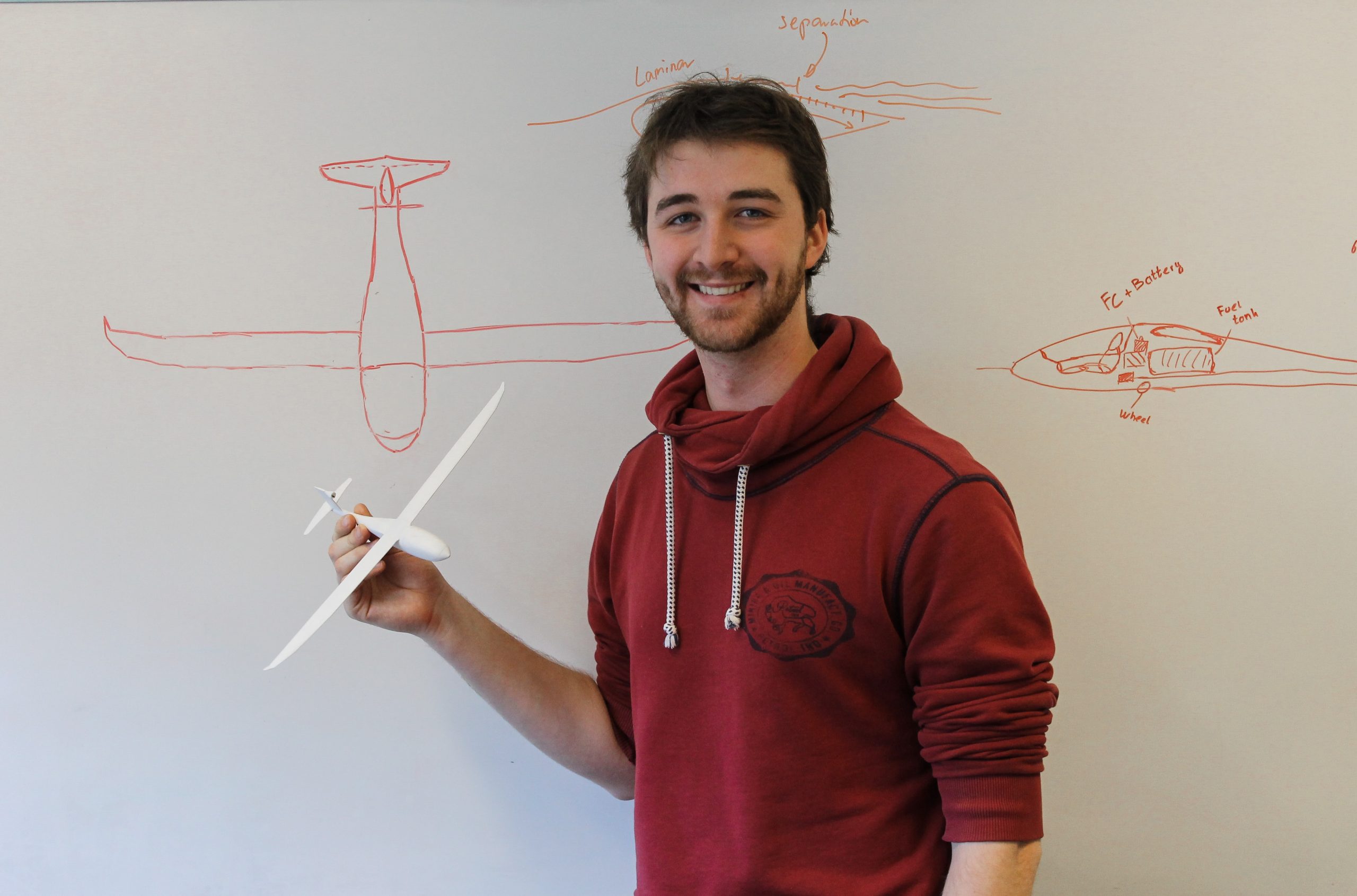Increasing air travel is bad news for the climate because of its CO2 emissions. Student Liam Megill has started working on a sustainable aircraft, the Phoenix.
Liam Megill: "My dream has always been to build a plane." (Photo: Nina van Wijk)
Megill’s AeroDelft project is developing the Phoenix, a hydrogen-powered plane with drag reduction wings. This two-seater will weigh around 850 kilograms and have a wingspan of around 22 metres. The aircraft will use a liquid hydrogen fuel cell. This is a challenge because liquid hydrogen has to be stored either at minus 250 degrees Celsius or by binding it to a carrier at room temperature. Apart from the hydrogen fuel cell, the plane will also have a battery to give it an extra boost at take-off. Another special feature will be the drag reduction wings. Drag is the force that pulls airplanes back instead of forward. The wings will be perforated with millions of small holes to suck air and decrease the level of drag. Delta editor Nina van Wijk interviewed AeroDelft’s initiator, aerospace engineering student Liam Megill.
Why did you set up AeroDelft?
“I’m a sailplane pilot instructor, I teach glider pilots. My dream has always been to build a plane. With all the Dream Teams here I thought that there must be a plane project. But there wasn’t one, so I decided to set up a team that builds airplanes in Delft.”
Why did you decide to make a hydrogen-powered aircraft?
“That was a long, long process, but we wanted to include sustainability in our project – we don’t do very much on sustainability at the Aerospace Faculty. There are two options for sustainable planes: pure electric, so with batteries, or hydrogen. We knew that there are a bunch of electric aircrafts in the same size category, so we decided to build one with liquid hydrogen. That hasn’t been done before and no one is working on it right now either.”
What does it mean for you personally to be a Dream Team?
“It was amazing, I had a great smile on my face for days afterward. It was a little difficult before becoming a Dream Team because you have no money and get no attention. Becoming a Dream Team meant that TU Delft supports you and helps you out. Also, companies are familiar with the concept, which helps with sponsorship and recruitment. People understand what we are. We have a couple of sponsorship agreements now and once we get a couple more, we can really make progress.”
What is the team size of AeroDelft?
“There are 25 of us right now, with five full-timers. In February we start recruiting for the coming academic year, hoping to build a team of 30 students.”
Next to using liquid hydrogen as fuel, you want to develop a new type of wing for the Phoenix. How does this process work?
“The project is split in two phases and in the first phase we take the existing design of an electric plane. We’re modifying it to put in our own fuel system, using the hydrogen fuel cell and batteries. We’re going to start production of the aircraft pretty quickly, probably around April or May. This plane should be ready to fly in around 2021, marking the end of phase one. Around that time we’ll have the drag reduction wings hopefully set, because these will be added to the aircraft in phase two. Before doing so, we have to test the wings by breaking them. You put them into a long jig and pull them up until they break.”
Where are you doing your testing?
“We can probably do most of the testing of our first aircraft ourselves in the Dream Hall. The big break tests on the drag reduction plane wings will be done elsewhere.”
Do you think AeroDelft will have a big impact?
“Yes. On the Faculty, but also on companies. We presented some of our work to people from a bunch of companies. When we say that there are aircraft like this that already fly, they’re very surprised. So hopefully we can run this as a big marketing thing to show companies it is possible. They can see that it works, and hopefully we can then sell them our technology. We also hope to do further research. What we do at the Aerospace Faculty is very theoretical, so we wanted to do something practical. Make people actually test what they come up with in their theses, in class or as researchers. Put it in an existing airplane.”
What is holding companies back in your opinion?
“Money. It’s engineers’ time and time is money. You invest money in research, but you’re not necessarily going to get anything back. The only motivator for companies to do something is to get funding, because then they pay their engineers with that money.”
What is your personal goal for the coming year?
“I’d like to see that we have produced the first set of wings and the tail by the end of the year. Apart from that, I want to create a well-knit team and ensure people are happy to work for the team. I want to make people excited about AeroDelft.”
 The AeroDelft team in the Dream Hall. (Photo: Nina van Wijk)
The AeroDelft team in the Dream Hall. (Photo: Nina van Wijk)Nina van Wijk / science editor trainee



Comments are closed.